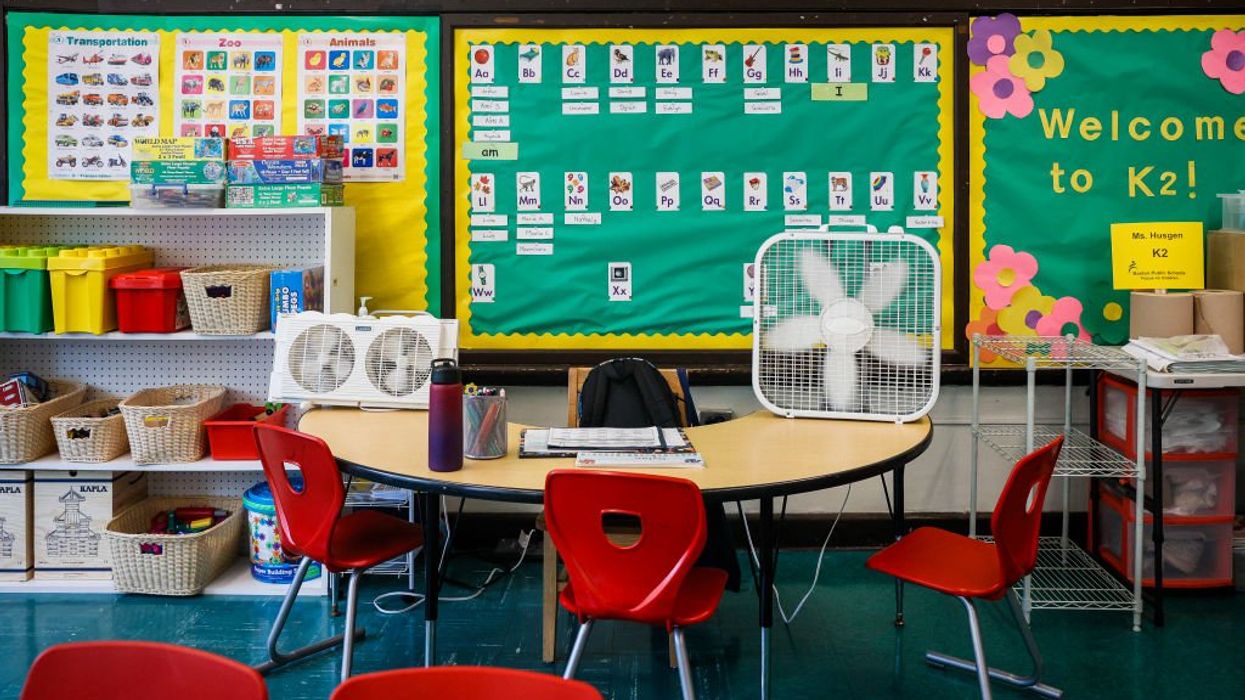
Photo by Erin Clark/The Boston Globe via Getty Images)

Seattle Public Schools is effectively killing off its gifted and talented program, caving to leftists in and outside the district who have long complained about the racial demographics of the Highly Capable Cohort program, which evidently failed to satisfy their utopian expectations.
Forsaking quality and meritocracy, SPS has indicated it will instead pursue an alternative that will supposedly be "more inclusive, equitable, and culturally sensitive."
State law has long required that Washington schools provide and maintain programs "for highly capable students."
Qualifying students are those "who perform or show potential for performing at significantly advanced academic levels when compared with others of their age, experiences, or environments. Outstanding abilities are seen within students' general intellectual aptitudes, specific academic abilities, and/or creative productivities within a specific domain."
By virtue of highly capable students of any race being academically superior to other students, they are necessarily unequal.
The Seattle Times reported that as of last year, the HCC comprised roughly 5,700 students. This cohort is made up of those who scored in the top 2% on standardized exams.
Unsurprisingly, recognition of this inequality has been a sore point for leftists who figure that education ought not only to standardize generations of children by their low standards but also to produce so-called equitable outcomes.
Former SPS superintendent Denis Juneau called for dismantling the HCC program in 2019, claiming, "It is very [racially] disproportionate."
The identitarian NAACP Youth Council and other leftist groups have championed the elimination of the program in the years since, claiming it was "built upon a foundation of white supremacy and constructed with the intent to perpetuate the segregation of schools on the basis of race and socioeconomic status."
The NAACP Youth Council noted that in the 2020-2021 school year, only 1.8% of the district's 8,130 black students, then amounting to 15% of the student body, were eligible for the HCC. 13.4% of Asian students and 63.2% of white students, who altogether accounted for 13.1% and 45.6% of the overall student body, respectively, were eligible. 16.2% of mixed-race students and 5.25% of Hispanics were eligible.
In the 2022-2023 school year, the Seattle Times indicated that 52% of HCC students at SPS were white, 16% were Asian, and 3.4% were black.
"We, the NAACP Youth Council, want the HCC program abolished from SPS," wrote the identitarians. "Every student deserves an equitable and anti-racist education that recognizes their brilliance. A program built to discriminate against students has no room for fixing."
SPS began phasing out HCC schools in 2021. All will apparently be eliminated by 2027. In the way of HCC institutions affiliated with the district, there are presently three elementary schools, five middle schools, and three high schools.
The next step in the war on excellence and distinction will be the implementation of the so-called "Highly Capable Neighborhood School Model" in every school beginning in September 2024.
Under this model, students of all abilities will be lumped into the same classroom. Teachers will then reportedly be tasked with creating individualized learning plans for each of their 20 to 30 students.
According to SPS, "All teachers will provide teaching and learning that is delivered with Universal Design for Learning (UDL) and differentiated to meet the needs of students within their grade level. The approach includes three tiers of service for students depending on individual needs, delivered in a way that honors individual cultures and backgrounds."
While all students will participate in Tier 1 learning, individuals flagged as needing more advanced or involved learning will be awarded Tier 2 services. After participating in Tier 1 and Tier 2 services, students, now assessed yearly, found still needing "something in addition to meet their complex needs," will receive Tier 3 services.
Critics suspect that SPS will ultimately bungle the implementation of its new scheme, especially because its $105 million deficit means it lacks the funds to train teachers on how to help highly capable students, reported the Seattle Times.
Teachers have complained anonymously to KOMO-TV that the district has provided teachers with no extra time, aid in the classroom, curricular help, or compensation to meet the unique needs of every student in a single classroom.
"I was a classroom teacher for 14 years. It's really hard to provide services to students when you have a group of kindergartners learning phonics and then you have a kindergarten[er] that's like fluently reading Harry Potter," said Reby Parsley, a gifted education specialist with the Washington Association of Educators of the Talented and Gifted.
"It seems to me that kids on maybe both extremes are going to be underserved," Erika Ruberry, a parent of a second-grader at a HCC elementary, told the Times.
Karen Stukovsky, a mother who has three kids at HCC schools, said, "You have some kids who can barely read and some kids who are reading 'Harry Potter' in first grade or kindergarten. How are you going to not only get those kids up to grade level and also challenge those kids who are already way above grade level?"
Like Blaze News? Bypass the censors, sign up for our newsletters, and get stories like this direct to your inbox. Sign up here!